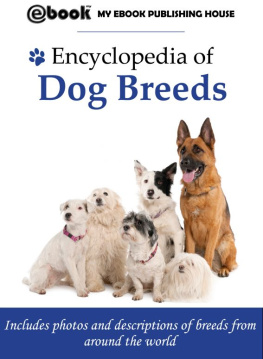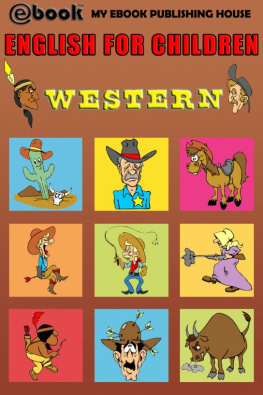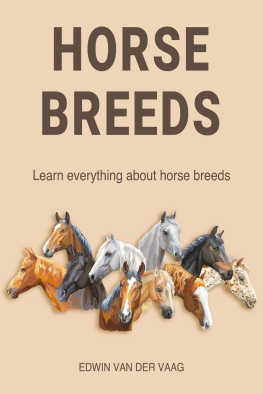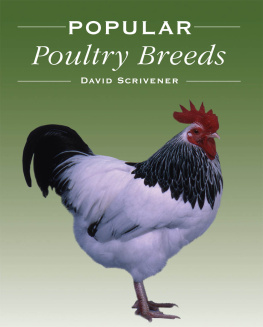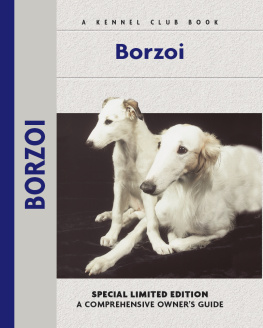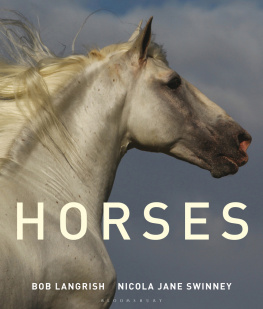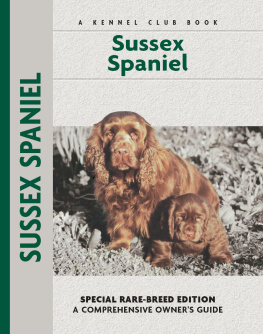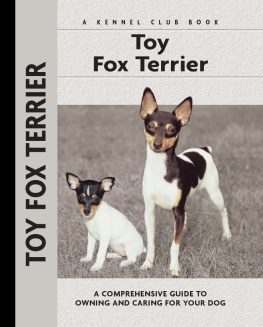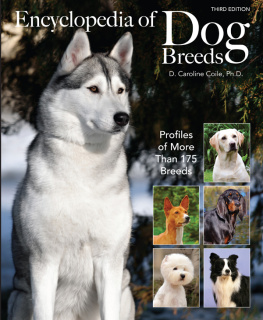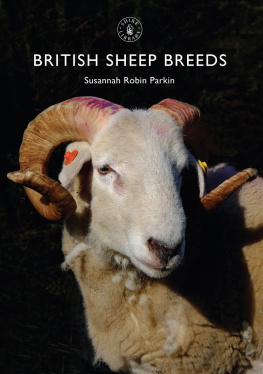Encyclopedia of DogBreeds
~~**~~
Published by My Ebook Publishing House atSmashwords
Copyright 2013 My Ebook Publishing House
Smashwords Edition, License Notes
This ebook is licensed for your personal enjoymentonly. This ebook may not be re-sold or given away to other people.If you would like to share this book with another person, pleasepurchase an additional copy for each recipient. If youre readingthis book and did not purchase it, or it was not purchased for youruse only, then please return to Smashwords.com and purchase yourown copy. Thank you for respecting the hard work of thisauthor.
~~**~~
~~**~~
Other Titles from My EbookPublishing House:


~~**~~
Table of Contents
1. THE GERMAN SHEPHERD
2. THE BELGIAN SHEPHERD TERVUREN
3. THE ROMANIAN CARPATHIAN SHEPHERD
4. THE MIORITIC ROMANIAN SHEPHERD
5. THE BRIE SHEPHERD-BRIARD
6. THE SHEPHERD DOG OF FLANDERS
7. THE SCOTTISH COLLIE SHEPHERD WITH LONG ANDHARSH HAIR
8. THE BORDER COLLIE
9. THE BOBTAIL ENGLISH SHEPHERD
10. THE SHETLAND SHEEP DOG-SHELTIE
11. THE COMONDOR
12. THE KUVASZ
13. THE MUDI
14. THE PULI
15. THE PUMI
16. THE MAREMAN ABRUZI SHEPHERD DOG
17. THE POLISH PLAIN SHEPHERD
18. THE SARPLANINA SHEPHERD
19. THE WELSH CORGI, CARDIGAN
20. THE WELSH CORGI. PEMBROKE
21. THE GERMAN BOXER
22. THE DOBERMAN
23. THE ROTTWEILER
24. THE GIANT SCHNAUZER
25. THE GERMAN DOG
26. THE MEDIUM SCHNAUZER
27. THE TERRA NOVA
28. THE ALASKAN MALAMUTE
29. THE SIBERIAN HUSKY
30. THE GREAT PYRENEE DOG
31. THE ENGLISH BULLDOG
32. THE BULLMASTIF
33. THE MASTIFF
34. THE ITALIAN DOG
35. THE SAMOYED
36. THE BERNESE MOUNTAIN DOG
37. THE SAINT BERNARD
38. THE GERMAN HUNT TERRIER
39. THE AIREDALE TERRIER
40. THE BEDLINGTON TERRIER
41. THE BULL TERRIER
42. THE IRISH TERRIER
43. THE KERRY BLUE TERRIER
44. THE SCOTTISH TERRIER
45. THE SKYE TERRIER
46. THE WEST HIGHLAND WHITE TERRIER
47. THE SMOOTH FOX TERRIER
48. THE WIREHAIRED FOX TERRIER
49. THE CESKY TERRIER
50. TECKELS
51. THE SAINT HUBERT BLOODHOUND
52. THE TRANSYLVANIAN HOUND
53. THE FOXHOUND
54. THE BEAGLE
55. THE BASSET HOUND
56. THE WEIMAR BRACKE
57. THE DEUTSCHE BRACKE WITH SHORTHAIR
58. THE DEUTSCHE BRACKE WITH HARSHHAIR
59. THE DEUTSCHE BRACKE WITH LONGHAIR
60. THE DEUTSCHE BRACKE WITH WIRYHAIR
61. THE LARGE MUNSTERLAND BRACKE
62. THE SMALL MUNSTERLAND BRACKE
63. THE POODLE POINTER
64. THE SHORT HAIRED HUNGARIANVIJLA
65. THE WIRY HAIRED HUNGARIAN VIJLA
66. THE HANOVERAN OUTRUNNER
67. THE POINTER
68. THE ENGLISH SETTER
69. THE IRISH SETTER
70. THE GORDON SETTER
71. THE GOLDEN RETRIEVER
72. THE LABRADOR RETRIEVER
73. THE ENGLISH COCKER SPANIEL
74. THE AMERICAN COCKER SPANIEL
75. THE MINIATURE PINSCHER
76. THE MINIATURE SCHNAUZER
77. THE FRENCH BULLDOG
78. THE POODLE
79. THE BOSTON TERRIER
80. THE KING CHARLES SPANIEL
81. THE CAVALIER KING CHARLESSPANIEL
82. THE CHOW-CHOW
83. THE SHIH-TZU
84. THE LHASA APSO
85. THE PEKINESE
86. THE MALTESE SILKY DOG
87. THE JAPANESE SPANIEL
88. THE PUG CARLIN MOPS
89. THE YORKSHIRE TERRIER
90. THE DALMATIAN
91. THE XOLOIZCUINTLE
92. THE CHIHUAHUA
93. THE AFGHAN HOUND
94. THE RUSSIAN HOUND-BARZOI
95. THE ENGLISH GREYHOUND
96. THE IRISH WOLFHOUND
97. THE WHIPPET
98. THE HUNGARIAN HOUND
99. THE PERSIAN HOUND-SALUKI
100. THE SMALL ITALIAN HOUND
I. THE SHEPHERD DOGS
Used over the centuries exclusively for guarding the sheepflocks or cattle herds as unique specialization, the dogs from thisgroup represent, through their way of forming and spreading, aproof of the important role they played into a certain historicstage from the evolution of the human society. This group containsa great number of breeds, with a large area of dispersion, a wealthof forms and varieties, owning, along with the breeds of huntingdogs, a special place numerically. From the start, the dog provedeven other qualities than the one of hunter and of them, theinstinct of guarding the masters belongings was always the mostappreciated. At the beginning, the watchdogs of the herds andflocks were exclusively a part of the large, massive, strong andcourageous dogs, ready anytime to face the kidnappers, no matter ifthey were wolfs or bears. In time, because of the differentenvironment conditions and the services solicited, the existentforms diversified a lot, appearing an increasingly number ofbreeds, with various exterior aspects. The first forms of shepherddogs are known from the oldest of times, and their greatdissemination is due to the development along the millenniums ofthe humans preoccupations for raising animals, of the economicalexchanges occurred between different human communities, of themigration of some people (particularly the Asian people), whichdetermined coming into contact of the different canine populationsand implicit of forming new breeds. In the actual conditions, whenthe number of animals raised in traditional system, on grass,diminished significantly, a great number of dog breeds, at originsfor herding, gained a well deserved role as protection orutilitarian dogs.
1. THE GERMAN SHEPHERD
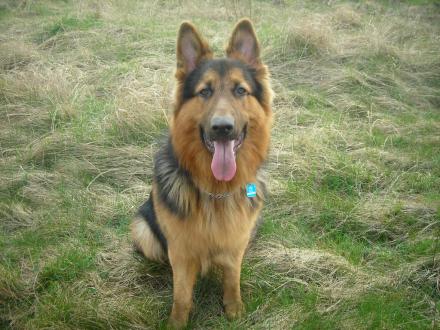
DESCRIPTION. Dog with harmonious general aspect, slightly elongated,athletic, with obvious musculature and strong skeleton. The head isbalanced, of a slightly elongated shape toward the snout, withoutbeing pointy. The jaws are powerful, with massive teeth that closein scissors. The snout is black. The eyes are medium sized,almond shaped, slightly oblique, brown colored, brisk look,intelligent. The ears are medium sized and pointy at the top, withtall insertion and are worn straight upward. The neck is strong,devoid of collar. The torso has a rectangular profile, with a longsuperior line, straight and slightly descendant, from the witherstoward the croup, well dressed in muscles, large and muscularloins, long and slightly splayed croup, deep chest, but not toowide, slightly sucked abdomen. The limbs are straight, parallel,with strong skeleton, small paw, round and well closed. The longtail, well dressed in compact hair, worn slightly arched,downwards, reaches the knuckles. It presents three varieties ofhair: short, harsh and shaggy, the most widespread being thevariety with short, thick, straight, harsh and slick hair on thebody, shorter on the head and the anterior faces of the limbs. Thecolor of the robe can be completely black or black withcharacteristic drawing, represented by brown shapes, buff, red,yellow, iron-gray, gray, as well as the agouti color (wolfish).The height at the withers, specified in the standard, is 60-65centimeters for males and 55-60 centimeters for females, the bodyweight varying between 25 and 40 kilograms.
THE ORIGIN. A German breed, it was considered for a long time as adomesticated form of the wolf, because of the seemingly alike withit regarding the general look. The old type of the breed issupposed to have appeared somewhere at the middle of theseventeenth century, the modern shape being described for the firsttime into a standard from the 1884. A special role in the growthand selection of this breed falls back to the cavalry captain Maxvon Stepanitz.
Next page
